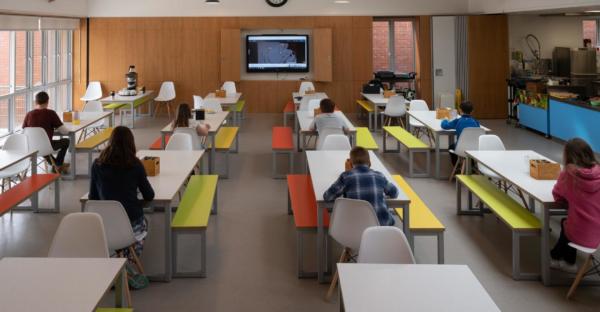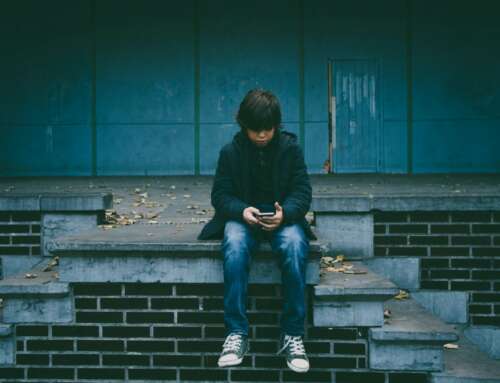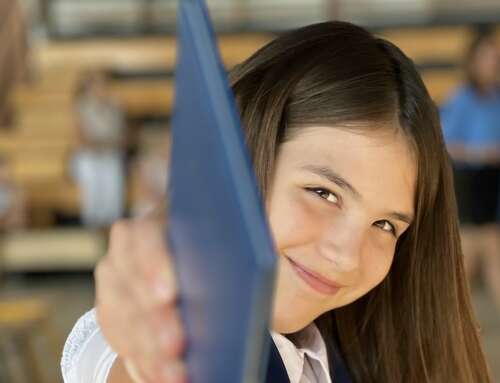After a remarkable success in flattening the COVID-19 curve, Australia’s States and Territories are now charting the course back towards school-based learning.
The shift to remote and online learning presented immense challenges for students, parents and teachers, and the digital divide means that existing educational inequalities are only likely to grow with sustained learning from home.

But is a return to business-as-usual, and curriculum-as-usual, the right thing for Australian schools?
Well, there are useful resources from history and the philosophy of education, which can help us respond.
While the desire for a return to ‘normal’ is understandable, this is an opportunity to re-think the relationship between school and life. We have, right now, a valuable chance for educators to engage with the curriculum of lived experience, through both academic study and civic participation.
This could be just what’s needed to help students recover, re-engage and become inspired by learning – all while under the lingering shadow of the pandemic.
Learning from history
Although the metaphor of ‘war’ remains problematic, looking to Australia’s war-time history can be instructive when we think about what communities and schools might do in times of extreme social disruption.
In the two World Wars, the Australian population was mobilised to either enlist and fight in the conflict, or to drive activity on the home front.

Government regulations directed employers and industry to manufacture arms, machinery and other goods for the war effort. Women’s participation in war-related employment skyrocketed. Schools also joined the effort, with classes audited to ensure that curriculums were current and authentic.
Students made wooden splints and cots for hospitals, knitted socks and fabric squares for blankets and studied maps of the ‘front’ to understand the latest fighting.
Certain historical events are of such a magnitude that they warrant a suspension of usual assumptions about the way social institutions operate.
They are an opportunity to re-ask old questions about the purposes towards which schools are working, and the interventions they may or not make into the lives of students.
So, what can schools do?
For some students, ‘normal’ campus-based schooling simply isn’t very meaningful. Engaging these students from a distance has, no doubt, been an even bigger challenge.
After such a momentous disruption to ‘normal’ life, an abrupt return to school campuses, and an abrupt return to the next unit of work listed in the formal curriculum, is hardly likely to help.

Research on deficit thinking, especially in the context of Aboriginal and Torres Strait Islander students, reminds educators to be wary of finding the ‘problem’ of disengagement in the individual student or family.
Really, we should be asking the question – what is it about schooling that fails to reach these inherently motivated and curious beings? How can schools operate, right now, in a way that is genuinely meaningful for all students?
A century ago, the renowned American philosopher of education Professor John Dewey argued that education really only occurs in the meaningful, socially-shared, encounter with genuine problems: “Only by wrestling with the conditions of the problem at first hand, seeking and finding his (her) own way out, does [the student] think”.
When education follows a rigid curriculum, detached from the first-hand experiences of students, the likely result is boredom, detachment and disinterest.
To really come alive, curriculum must engage with life itself.
School and life
In 2020, the key challenge is to construct a curriculum that provides a clearer picture of the current crisis, and ways to act affirmatively within it.
Rather than seeing the current circumstances as a threat to student learning, this may in fact be the best opportunity in a generation for meaningful education – a chance to broaden our educational focus, and to empower young people to understand the historical moment they are a part of and which will forever alter their futures.
Many Australian teachers are already embracing this challenge, but there are opportunities across the curriculum which would allow students to “wrestle with the conditions of the problem at first hand”.

In mathematics, students could investigate exponential growth and epidemic simulations; in history, they can explore the 1918-19 Spanish Flu pandemic and its specific impacts on Australian Indigenous Peoples; in science, there’s the potential to investigate virology, immunology and epidemiology; in economics, students can investigate how stock markets, unemployment and fiscal policy respond to health crises; and in the arts, students could investigate artistic responses to 1918-19 influenza, and the role of the arts in processing trauma.
There are also a wealth of opportunities for students to be the “active and informed members of the community” as aspirationally described in the Mparntwe declaration which, in 2019, set out a vision for education in Australia and a commitment to improving educational outcomes for young Australians.
Students could compose letters or e-cards of appreciation to frontline workers, or create historical archives of life under the pandemic for future generations. Classes could prepare and deliver meal and support packages for the elderly, those in need or in isolation.
All of these activities could integrate all sorts of curricular knowledge and skills in literacy, numeracy, the arts, social sciences and more.
This is a type of education that is two-fold – beyond academic learning, its purpose is also to improve individual and social wellbeing, build social cohesion, and to assist communal sense-making surrounding the crisis.
Honest, rigorous study of the conditions of actual life under COVID-19 could also be the best way to support young people and their families through these unsettling and challenging times.

Challenging the barriers
As any teacher would know, there are many potential barriers to rethinking curriculum in this way.
A predominantly top-down managerial and technocratic approach to curriculum remains problematically insensitive to the unique settings of educators’ work.
Institutional cultures focused on audit, accountability and standardised testing, compounded by increasing workloads, often work to prevent the required spontaneity, creativity and risk-taking.
However, the opportunity cost of continuing business-as-usual is that we fail to engage effectively with the lives of all students.
The curriculum of life itself, rather than curriculum-as-usual, provides a way for educators to think and act affirmatively at a time when we have been told most of all to stop.
Schools and educators have a chance to re-evaluate their understanding of ‘normal’ and to experiment with creative responses to the emerging social and educational needs of the moment.
There are possibilities for deep, relevant disciplinary learning, powerful civic participation, and a newly enlivened sense of purpose for both educators and students.
“This article was first published on Pursuit. Read the original article.”








Leave A Comment